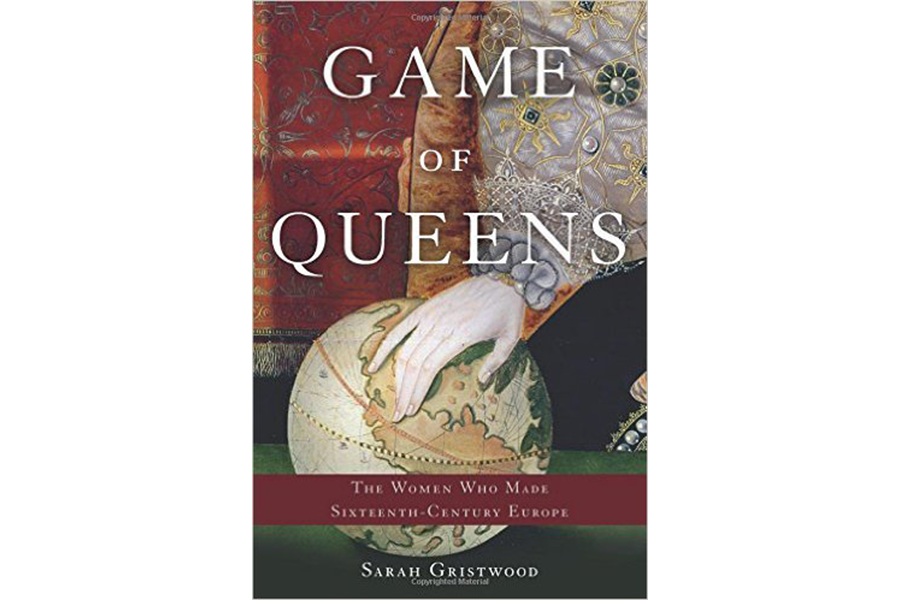'Game of Queens' profiles a savvy set of bold European queens
Loading...
A handy trick to remember the fates of King Henry VIII's wives may be the saddest memory device of all time: "Divorced, Beheaded, Died. Divorced, Beheaded, Survived."
Such was the lot for Europe's royal ladies in the Middle Ages, who were more vulnerable in many ways than the men they married. They faced the ever-present danger that misfortune or misbehavior would rob them of their positions or even their heads.
It's a recipe for weakness, especially in a time of tremendous antagonism toward women in power. But a savvy set of bold queens in the 1500s changed the storyline. They expanded and protected their roles, refusing to be dominated by men, and several would rule alone.
"From now on, in the Western world, the tally card would record that it had been possible for women to control countries.... [N]o one would say that was an impossibility," writes British historian Sarah Gristwood in her insightful new book Game of Queens: The Women Who Made Sixteenth-Century Europe.
And that wasn't all, she writes. Some of the women hadn't just ruled. They'd ruled well.
Much of the book covers the ever-fascinating and ever-grisly story of the Tudors in England. But Gristwood pulls back to a wider view of Europe and the far-flung queens who greatly influenced events: Isabella of Castile, Louise of Savoy, Marguerite of Navarre, Catherine de Medici, and more.
For much of the Age of Queens, from the late 1400s to late 1500s, she writes, "large swaths of Europe were under the firm hand of a reigning queen or a female regent. This was a sisterhood that recognized both their own bonds as women and their ability to exercise power in a specifically feminine way."
Not that these women wanted to be seen as especially feminine, a trait that – then as now – often fails to portray strength and power. At times, the words of the queens are reminiscent of Lady Macbeth ("unsex me here!") pleading to be filled with manly cruelty.
For example, Margaret of Austria, who turned herself into the de-facto ruler of the important Savoy duchy as her husband went a-hunting, writes this as a widow when a royal reneges on a power-sharing deal: "For all that we are a woman, our heart is of a different nature." And there's Elizabeth I: "I know I have the body of a weak and feeble woman, but I have the heart and stomach of a king."
After all, there was plenty of debate about whether women should be able to rule (or even do) much of anything, and the Bible served as a weapon for both sides. History's first recorded female professional writer, the Italian Christine, made an argument that's as compelling now as when she wrote it some 700 years ago: The Gospels include "little criticism" of women, never mind what anyone may suggest. Christine's writings would be passed through generations of European royalty in the 1600s.
So how did these queens gain and retain power? A lot of it had to do with refusal to yield: Yes, I'm in charge here. No, I'm not stepping down, sharing power or giving up influence. No, I'm not marrying him. No, I'm not marrying anyone at all.
Those last two options were risky. Royal women advised each other to remain independent and beware of promises from men. But, as Gristwood writes, their bodies became public property in an extraordinary way as the world monitored their chastity, fertility, and beauty. Failure on any of these fronts could, and did, lead to big trouble.
While these women may sound inspiring, there are complications. Isabella of Castile launched the Spanish Inquisition. England's Mary I and Elizabeth I presided over bloody religious wars. Yet they could not bend to what Lady Macbeth sneeringly calls the "milk of human kindness" and survive. And any accusations of weakness would have stung them, as women, especially hard.
Of course, we're still debating women in power today. Gristwood ties her story to that of Hillary Clinton, who was on the cusp of becoming the most powerful person in the world. "The fact that she can do this," she writes, "is in part these women's legacy."
Gristwood ends her book with an excerpt of verse in Elizabeth I's honor by 17th-century American poet Anne Bradstreet, one tailor-made to inspire all women who bust barriers or hope to do so:
Now say, have women worth, or have they none?
Or had they some, but with our Queen is’t gone? ...
Let such as say our sex is void of reason
Know ‘tis a slander now, but once was treason.
Randy Dotinga is a freelance writer and immediate past president of the American Society of Journalists and Authors.






